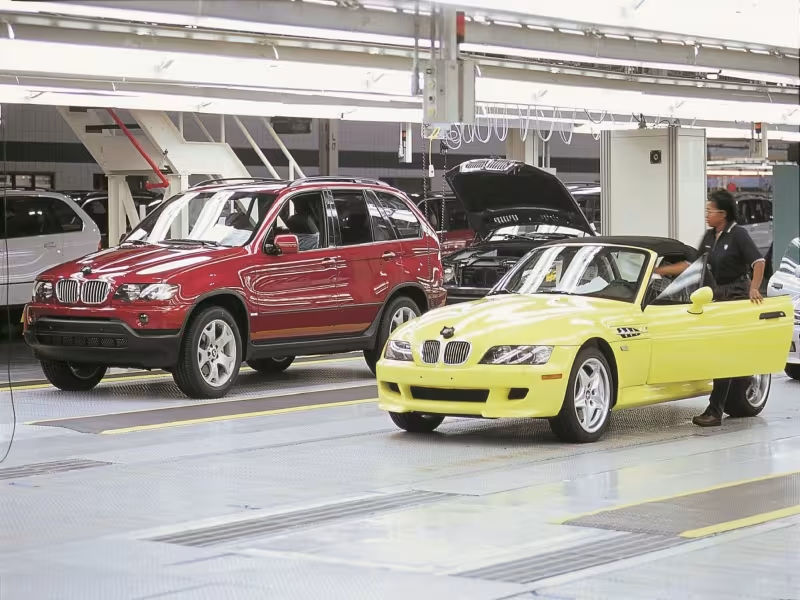
SHERIDAN, WYOMING – May 23, 2025 – When BMW launched the Z3 in the mid-1990s, it did far more than introduce a new roadster—it sparked a cultural phenomenon. What began as a “Fun Car” styling exercise in Munich evolved into one of BMW’s most beloved icons, reestablishing the roadster’s role in modern driving and creating a deep emotional bond between car and driver.
A Legacy Reimagined for the Modern Era
Inspired by the legendary 328 of the 1930s and built on lessons from the Z1 and E30 chassis, the Z3 was never meant to be just another sporty car. BMW envisioned it as an accessible, fun-to-drive entry-level model—simple, nimble, and brimming with personality. “The car was supposed to be a compact, fun-to-drive city commuter for DM 40,000 ($25,000),” said designer Joji Nagashima.
Engineered on a budget, the Z3 used existing parts creatively. It featured a shorter wheelbase from the E36 and the rear suspension from the older E30. “Using the E30 suspension/axle concept made the Z3 a lot of fun to drive,” said Dr. Burkhard Göschel, who led the project.
Born in America, Debuted by Bond
Production began in Spartanburg, South Carolina, in September 1995. Just two months later, the Z3 made its global debut in GoldenEye, where it briefly stole the spotlight from James Bond’s traditional Aston Martin. “We’re not going to spend any money to place the car in the movie,” said BMW’s Tom McGurn. “But what we will do is incorporate it into the launch campaign.”
The strategy paid off. When GoldenEye premiered in November 1995, BMW dealers displayed pre-release Z3s during special screenings. “There was a tremendous number of pre-orders, something like six months of production,” McGurn said. A limited Bond Edition Z3, complete with “007” detailing, sold out almost instantly through the Neiman Marcus Christmas catalog.
An Enthusiast Movement Like No Other
Sales exploded. By the end of 1996, BMW had sold over 15,000 Z3s in the U.S. alone. For many owners, the Z3 wasn’t just a car—it was a lifestyle. That passion culminated in the Z3 Homecoming, a grassroots annual event started in 1997 by Amy and Wayne Lester. Originally expecting 60 cars, the event drew 160 and quickly became BMW’s largest annual customer celebration.
“We started planning a party and tech sessions to let engineers and assembly workers see how the cars were doing,” recalled BMW Communications Manager Kenn Sparks. The spontaneous nature of the event created real connections: “It was absolutely authentic and genuine, and it got customers talking about these BMWs that were made in the US,” Sparks added.
BMW’s American workforce also felt the love. “Once they knew he was there, they all ran out to their cars to get the owner’s manual so he could sign it,” said Carl Flesher about Dr. Göschel’s visit. “He sat there until after midnight and signed them all.”
Stories That Moved Lives—And Miles
For many Z3 owners, their roadsters became more than vehicles. “We invited the roadster owners to speak after dinner, and they often told stories about how the little BMW had literally saved their lives,” said Sparks. From emotional healing to surviving car crashes, the Z3 was a partner on the road and in life.
The Lesters eventually got their own Z3—a rare Sundown-colored 2.8i that’s now driven over 410,000 miles and was featured in the BMW Museum in Munich. Their journey is a testament to the roadster’s durability, charm, and the profound bond it forged with drivers around the world.
A Roadster That Drove Into History
In total, BMW built 297,088 Z3 and M variants, all crafted in Spartanburg. More than just a vehicle, the Z3 became a symbol of BMW’s innovation, accessibility, and emotional connection with consumers. Its legacy continues today, not just in museums, but on the open road—where tops are still down, engines hum, and drivers smile.
Learn more at www.bmwusa.com